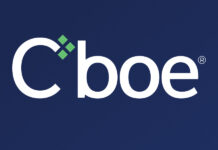 Global consultancy & analyst firms have called for innovative approaches to trading desk technology in fixed income. Now, David Tattan, Managing Director & Head of European Sales says TORA’s Order / Execution Management System (OEMS) has the capability to revamp bond trading.
Global consultancy & analyst firms have called for innovative approaches to trading desk technology in fixed income. Now, David Tattan, Managing Director & Head of European Sales says TORA’s Order / Execution Management System (OEMS) has the capability to revamp bond trading.
What does TORA’s move into fixed income mean for traders?
The TORA OEMS now allows investors to trade across global fixed income sectors from government bonds, to corporate bonds and emerging markets.
Our new bond trading capability sits alongside our long standing functionality to trade fixed income futures and options, including futures on interest rate swaps and fixed income ETFs. We support a range of trading protocols as you would expect from request-for-quote (RFQ) to all-to-all trading. We have broad connectivity across platforms.
How will the TORA trading system specifically appeal to the fixed income community?
The fixed income community has long been familiar with the concept of order management systems (OMSs) and in recent years they have seen the appearance of fixed income execution management systems (EMSs) as the bond market has become increasingly electronic. They are also familiar with onsite OMS implementations. At TORA we offer an all-in-one trading system with all execution management and order management functions in the same system. This means a significant increase in day-to-day efficiency as the traders, portfolio managers and operational teams are all working from one holistic system.
Our technology includes both advanced auto routing functionality and execution analysis, both of which are available in the OEMS for fixed income. As the market develops then this type of functionality will become essential for FI traders.
The public discussion of whether to choose EMSs or OMSs seems to be one that continues to circle the fixed income space. What are your views on this?
The split between fixed income EMS and OMS technology has not been demand-driven. It was legacy technology driven. The terms EMS or OMS is becoming less relevant and having a single system with both is increasingly an advantage.
How does TORA support data-driven trading?
Our OEMS allows traders to stream data into the system via API and build data-driven auto routing rules. These can allow the trader to direct orders to certain venues or counterparties based on historical execution outcomes.
What impact does a data-driven approach have?
It increases clarity. The fixed income market has changed considerably since the Lehman crisis. Many things have changed including how investment banks hold inventory and the channels in which bonds are trading. Determining smarter ways to interact with these venues forces the trader to be more data driven.
Using spreadsheets, conversation and messaging to transmit orders between trader and PM increases the chance of misinterpretation. This ultimately reduces efficiency from the start, whereas data-led communication increases efficiency.
Liquidity in fixed income can look very different based on an investment firm’s fund and investment profiles. Being able to represent your own activity with proprietary data is therefore important for portfolio managers and traders. A lot of firms pump their own analytics into their OMS to enhance the data within the system. They can do this via API, which many of our clients do, and that is key to the enrichment of the investment process.
In terms of market volatility, as the market becomes more quant-based, speed is also increasingly important. Your trading system must connect to third party signals via API. Having a system like TORA, which is well suited to active traders and has very good APIs, means clients can easily connect our system into the data and analytics tools that they use to support their trading today.
So you see analytics and automation as the natural outcomes?
Analytics puts increasing amounts of actionable information on the trader’s dashboard or blotter to give them an edge at the point of execution. Automation takes repetitive tasks away from the trader where possible to free him/her up for value-added items. This could be designing auto-routing rules to send low touch orders based on different criteria, removing workflows to avoid re-keying data and full straight through processing (STP) from portfolio decision making, to re-balancing, to execution and all post-trade processes.
There is space in the market for full automation for highly liquid bonds like Treasuries which have a deep market. However, you can increase automation for many other instruments, even the less liquid ones, by creating various ticket defaults and then having a trader make the call of how to execute the trade.
Which investment managers might be drawn to TORA?
TORA appeals to large and small asset managers with a varied asset class remit. Our cloud-based system gives clients a clear advantage in the work from home environment, instant login access prevents latency, operations run smoothly and in real time with all the features and functionalities a trader is accustomed to, whether they are working remotely or in the office.
Larger asset managers like our broad coverage of asset classes and having order and execution management in one single system. Smaller specialist asset managers also like the combined OEMS, but also see the fact our technology is cloud-based as an advantage because it is easier to implement and prevents having to implement multiple systems.
What opportunity do you see in the fixed income space for TORA?
We believe there is considerable demand for strong fixed income trading systems to improve trader efficiency and also take care of downstream operational requirements such as allocations, risk-controls and position keeping.

©Markets Media Europe 2025












